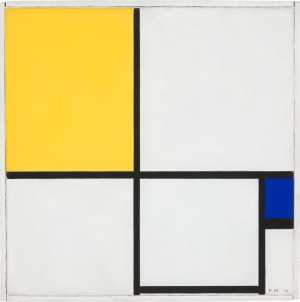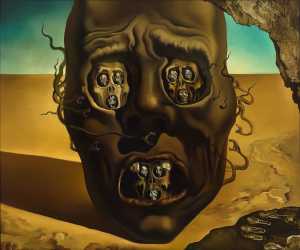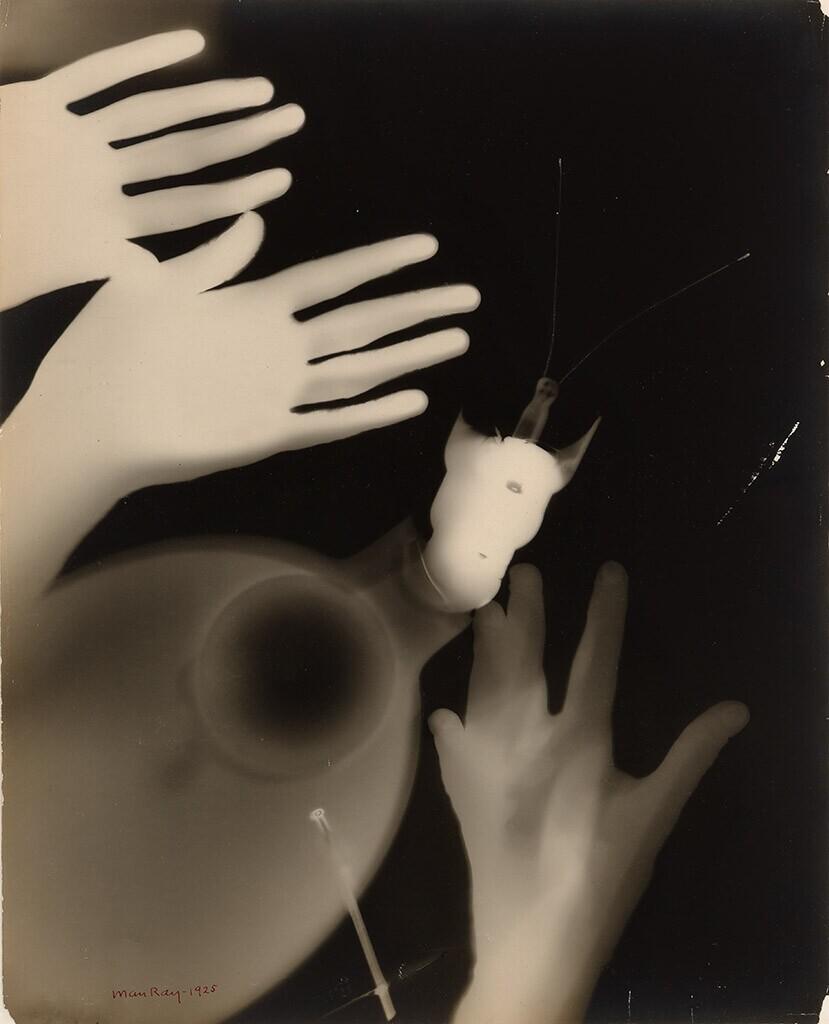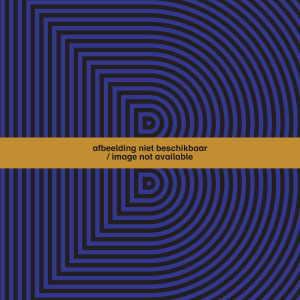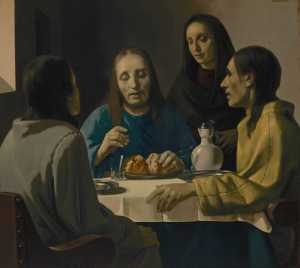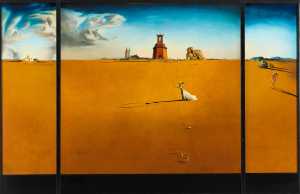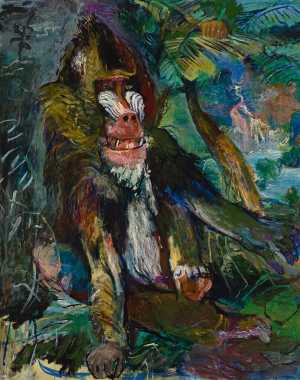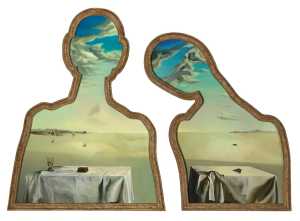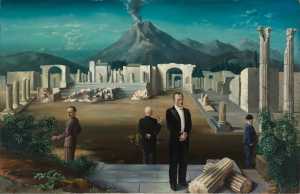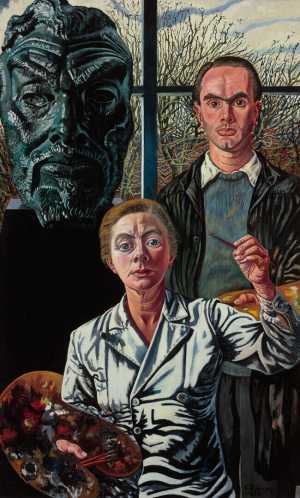The American artist Man Ray (born Emmanuel Radnitzky) moved to Paris in 1921 and became a member of the Surrealist movement. He undertook numerous experiments with photographic techniques and processes. For example, he developed a technique of placing objects on light-sensitive paper and exposing the whole, resulting in unique photographs with mysterious shadowy representations of objects. Man Ray named this technique after himself: rayography. The photograph in the collection of Museum Boijmans Van Beuningen is one of the largest rayographs in the world.

Specifications
| Title | Rayograph |
|---|---|
| Material and technique | Photogram (Rayography), gelatine silver print on fibre-based paper |
| Object type |
Photograph
> Two-dimensional object
> Art object
|
| Location | This object is in storage |
| Dimensions |
Height 98,5 cm Width 88,2 cm Thickness 8 cm |
|---|---|
| Artists |
Artist:
Man Ray
|
| Accession number | 2798 a (MK) |
| Credits | Purchased 1972 |
| Department | Modern Art |
| Acquisition date | 1972 |
| Creation date | in 1925 |
| Entitled parties | © Man Ray Trust / ADAGP, c/o Pictoright Amsterdam 2018 |
| Provenance | Artist’s collection |
| Exhibitions | Rotterdam/Paris/Humlebaek 1971-72; Mönchengladbach/Krems an der Donau/Winterthur 1997-98; Rotterdam 1996a; Rotterdam 2011; Rotterdam 2014b; Rotterdam 2017b |
| Internal exhibitions |
Surreëel: foto's uit de collectie van Museum Boijmans Van Beuningen (2011) Brancusi, Rosso, Man Ray - Framing Sculpture (2014) Collectie - surrealisme (2017) |
| External exhibitions |
Man Ray (2018) Dal nulla al sogno (2018) Histoire de ne pas rire. Le surréalisme en Belgique (2024) |
| Research |
Show research A dream collection - Surrealism in Museum Boijmans Van Beuningen |
| Literature | Rotterdam/Paris/ no. 232; Paris 1981-82, cat. no. 157; Man Ray/J. Man Ray/Foresta 1988, pp. 106-09; Rotterdam 1995, cat. no. 217; Rotterdam 2012, p. 152; Rotterdam 2014, pp. 214-15, cat. no. 44 |
| Material | |
| Object | |
| Technique |
Gelatine silver print
> Bromide print
> Photographic printing technique
> Mechanical
> Planographic printing
> Printing technique
> Technique
> Material and technique
Photogram
> Photographic printing technique
> Mechanical
> Planographic printing
> Printing technique
> Technique
> Material and technique
|
| Geographical origin | The United States of America > North America > America |
Entry catalogue A dream collection - Surrealism in Museum Boijmans Van Beuningen
Author: Marijke Peyser
In 1922 while he was in New York, Marcel Duchamp wrote an enthusiastic letter to his friend Man Ray in Paris: ‘I am delighted to hear that you are enjoying yourself and that you have said farewell to painting.’[1] In the winter of 1921-22 the poet Tristan Tzara had been the first to see Man Ray’s sensational discovery with his own eyes.[2] He was also the one who had urged Duchamp to find out about it.
While he was developing photographs for the Parisian couturier Paul Poiret, Man Ray had accidentally dropped a sheet of unexposed paper into the developing tray. He placed a small glass funnel and a thermometer on the wet photographic paper and turned on the light in the small bathroom he used as a darkroom.[3] An image slowly began to form – not with sharp outlines as in normal photography, but with white, variously transparent silhouettes against a dark background. The sheet in Museum Boijmans Van Beuningen’s collection with three hands and a number of indeterminate objects is one of the largest examples.
Until then Man Ray had been using his camera to investigate the sculptural aspects of everyday things (see La mer de merde and La plus belle statue d'Amérique). Now he left the work to the objects that he had around him and to chance. Man Ray said that Tzara was amazed and called these camera-less photographs ‘pure Dada’.[4] The poet Robert Desnos was also excited about the countless possibilities of Man Ray’s discovery. In an article published in the Paris newspaper Le Journal Desnos described Man Ray as a prophet, a guide to the until now rarely accessible and hidden worlds of perception.[5] To a man, the members of the Surrealist group raved about the photographs created by ‘rayography’, the term Man Ray had first used for this process in 1925. They saw rayography as an equivalent to the ‘automatic writing’ they practised, which was a product of the subconscious, uninfluenced by reason. Like those methods, the images created without a camera were free of conscious control and acquired skills. Every rayograph is unique because there is no negative.[6]
Man Ray was not the inventor of photographing without a camera. The painter Christian Schad had already been experimenting with photograms, the usual name for photographs created without a camera, in 1918. However this technique became a success thanks to Man Ray’s great ingenuity.
All about the artist
Man Ray
Philadelphia 1890 - Parijs 1976
The American artist Emmanuel Radnitzky, who would call himself Man Ray, began his career as engraver and advertising designer. In New York he got to know the...
Bekijk het volledige profiel

